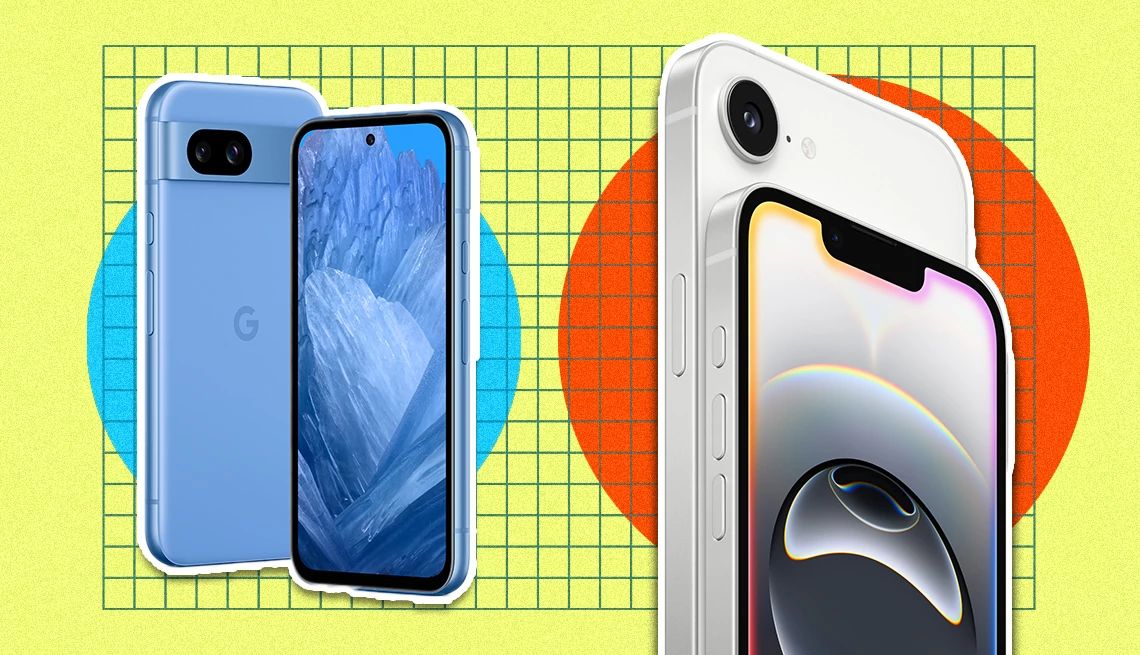Play all audios:
AARP (Google, Apple) Facebook Twitter LinkedIn In this story Deluxe smartphones, high prices • Compromises for low price • Decide your tradeoffs • 16e is economical iPhone • Pixel 8a is
Android alternative • Even less expensive Androids
Smartphones that typically grab headlines are luxury splurges with prices to match.
But practically everybody has a smartphone nowadays, including more than 9 in 10 folks age 50 and older, according to AARP surveys. Not everyone spent an arm and a leg to get one.
Prized, feature-rich phones still command prices beyond the means of many older adults, especially people out of work or living on fixed incomes.
Monthly payment plans and trade-ins can ease sticker shock. But absent subsidies from mobile providers, prices can swell well past $1,000, not even factoring in phone service and data
charges.
Lower prices do mean some compromisesStill, you can purchase a perfectly capable smartphone without stretching your budget, and you can employ it for the usual tasks: photography, browsing and staying in touch with loved ones
concerned about your safety and wellbeing.
Everybody’s idea of affordability varies, but cheaper phones don’t necessarily cheap out on basic features. Inevitable tradeoffs — ho-hum processors, less memory, middling cameras — don’t
have to be dealbreakers.
You shouldn’t have to compromise too much.
“Technology has advanced rapidly, so a sub-$300 Android phone will meet basic needs like calling, messaging, browsing, banking, navigation, etc.,“ says New Jersey-based tech analyst Avi
Greengart of Techsponential, citing Motorola’s Moto G family of devices as an example.
“As you pay more, you get better and more versatile camera setups that take higher quality pictures, especially in the dark,” Greengart says. “You also get much better displays, especially
in the sun.”
The question: What do you value most?Some consumers may find it worth spending extra for longer software support and the higher resale value of premium phones from Apple, Google and Samsung, Greengart says. But even some lower
priced handsets are getting extra-long support.
You have other ways to shave costs: Consider last year’s or the year before’s state-of-the-art models if the devices are still available. Knock a bit off your cellular bill by opting into
online or automatic bill pay.
Be aware that China is the source of a lot of smartphones or components within the phones. Two tariffs announced this year that total 20 percent will put upward pressure on phone prices in
the long run.

